Category : Students, Foundation
Posted : Wednesday, January 26, 2022
Edited By : Rebekah Grmela
Monday, January 24, 2022
Science Student Spotlight: January 2022 Edition
Rebekah Grmela
Welcome back to this month's Science Student Spotlights! Throughout the year, we'll be featuring the science and work of some of our best and brightest SEPM Student Members, including some of our SEPM Foundation Research Grant awardees.
Check out some of this month's featured student work:
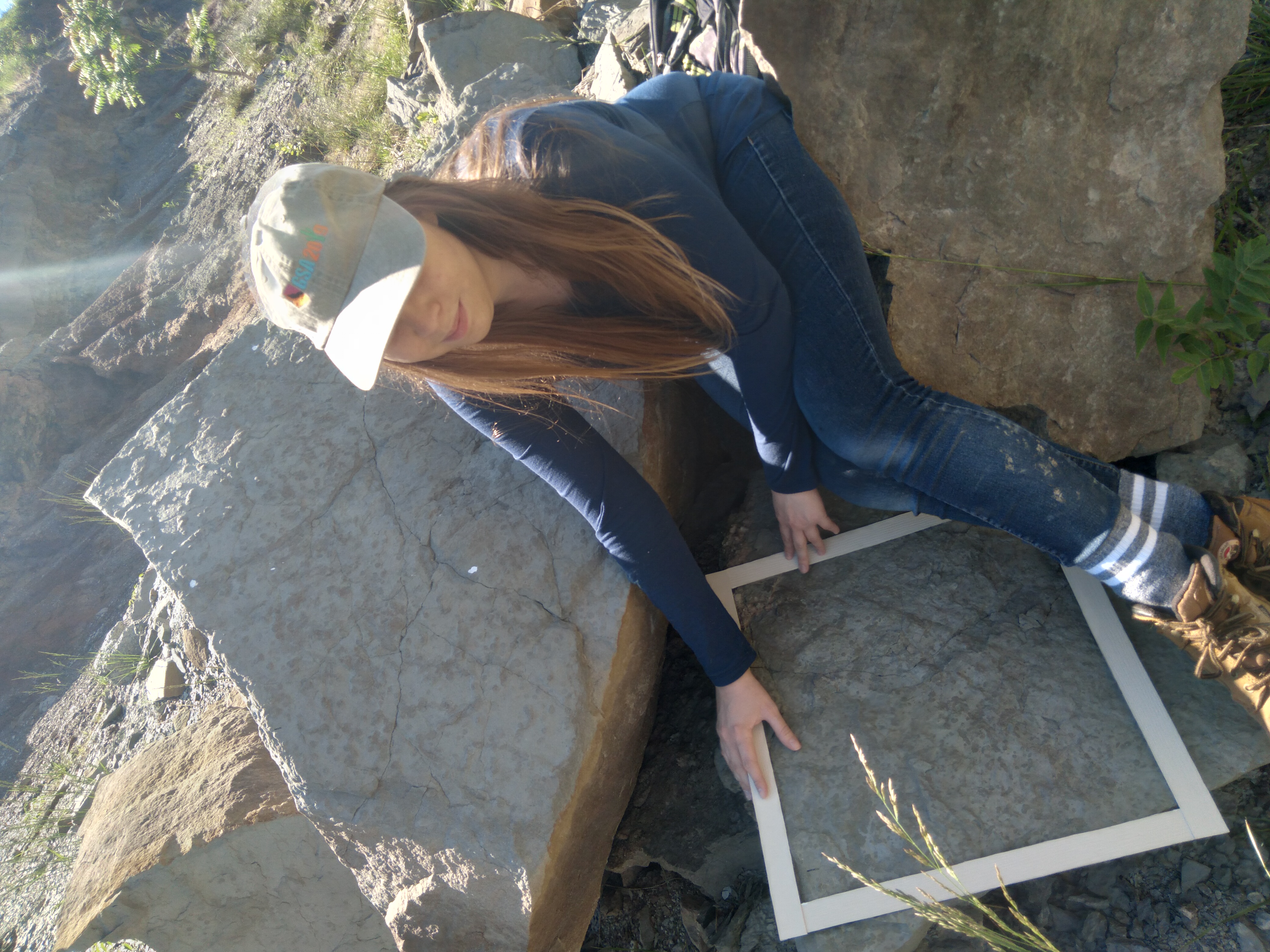 | Name: Jennifer Crowell
School: Ohio University
Research Statement: Climate-Induced Changes in Fluvial Ichnofossil Assemblages of the Pennsylvanian-Permian Appalachian Basin
Summary: For my thesis research I am investigating climate-induced changes in fluvial ichnofossil assemblages of the Pennsylvanian-Permian Appalachian Basin. I am assessing ichnofossil abundance, density, diversity, and composition within point bar sandstones of the Allegheny, Conemaugh, Monongahela, and Dunkard groups of Ohio and West Virginia. By investigating changes in terrestrial ichnofossil assemblages, I can better understand the impact of climatic shifts on continental ecosystems and the long-term response of terrestrial invertebrate communities to these changes.
|
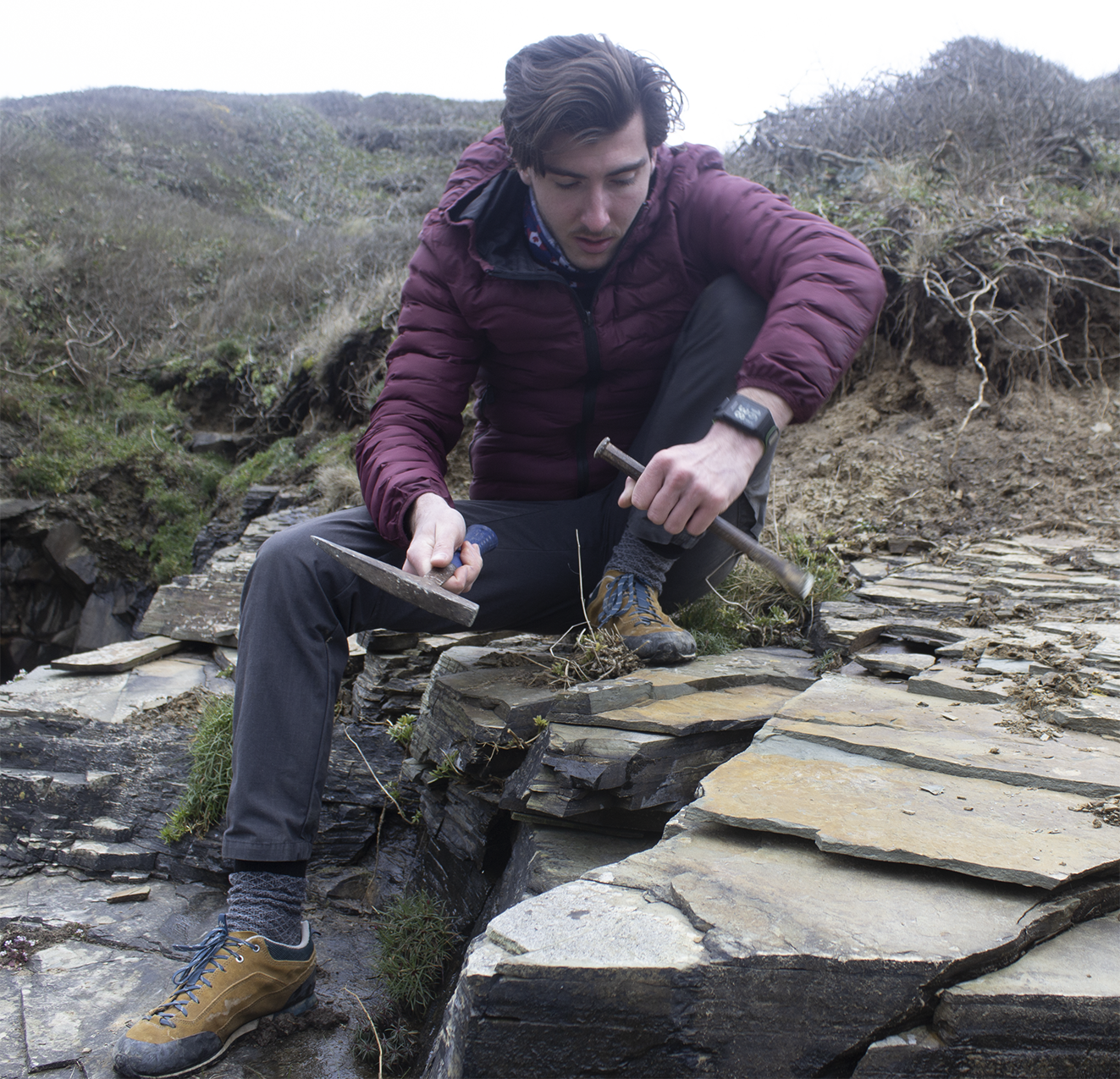 | Name: Baptiste Coutret
School: University Rennes (France)
Research Statement: Environmental controls on trace fossil distribution from the early Cambrian Le Rozel Formation in Normandy, NW France: Integrating sedimentologic and ichnologic datasets to unravel the early metazoan evolution of an unexplored area
Summary: Le Rozel Formation in Normandy (NW of France) displays a new trace fossil assemblage which is composed of characteristic ichnogenera Archaeonassa, Nereites, Psammichnites and Treptichnus. These trace fossils are distributed throughout a thick siliciclastic succession dominated by siltstone intercalated with thin sandstone beds, in places presenting oscillatory flow structures (wave ripples) and salinity fluctuation (syneresis cracks). U-Pb datings from detrital zircons (n=8) gave a maximum deposition age of 546 7 Ma. Concurrently, a Fortunian ichnostratigraphic age is suggested regarding the sophisticated feeding and grazing strategies record by the trace fossils assemblage. This new locality shed lights on the behavioural evolution and body-plan diversification of the first metazoans through the fossil record of Ediacaran-Cambrian deposits in the Armorican Massif. 
|
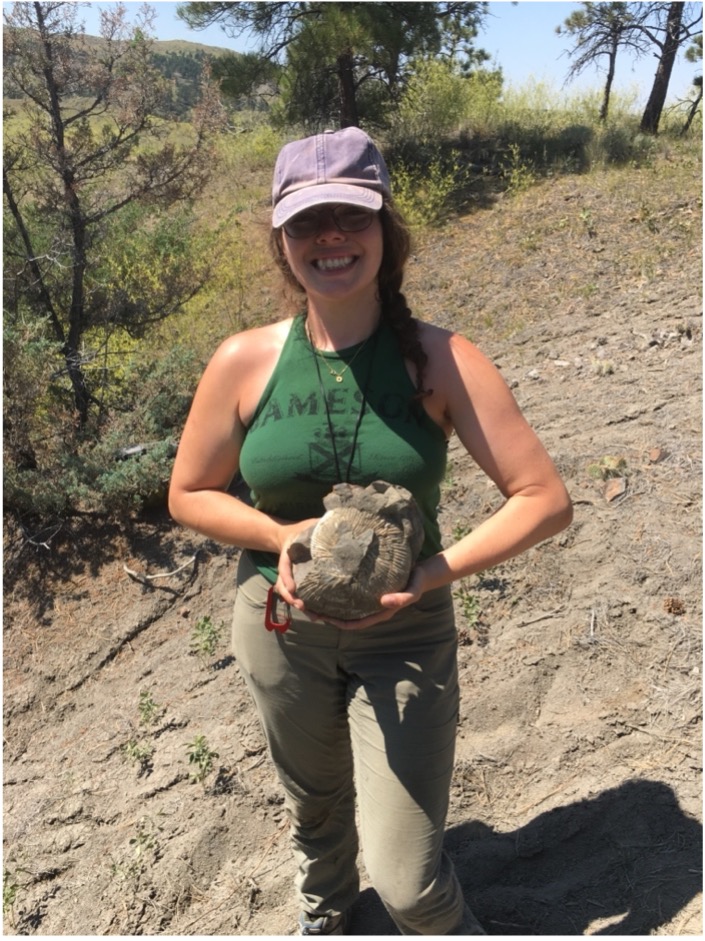 | Name: Shannon Brophy
School: University Southern California
Research Statement: Comparing the Biotic Response of Methane Seep Paleocommunities to Environmental Perturbations Across Time and Space
Summary: Stratigraphic column and overview of outcrop from one of my study sites in south-central Utah. Here, the Upper Cretaceous (Cenomanian-Turonian) Tropic Shale Formation preserves several fossiliferous cold seep deposits, one of which appears to cross the Cenomanian-Turonian Boundary (C-T B). These seep deposits are coeval with Oceanic Anoxic Event 2 (OAE 2), a severe global carbon cycle perturbation. This site allows us to study how conditions associated with OAE 2 affected methane seep paleocommunities in the Late Cretaceous Western Interior Seaway.
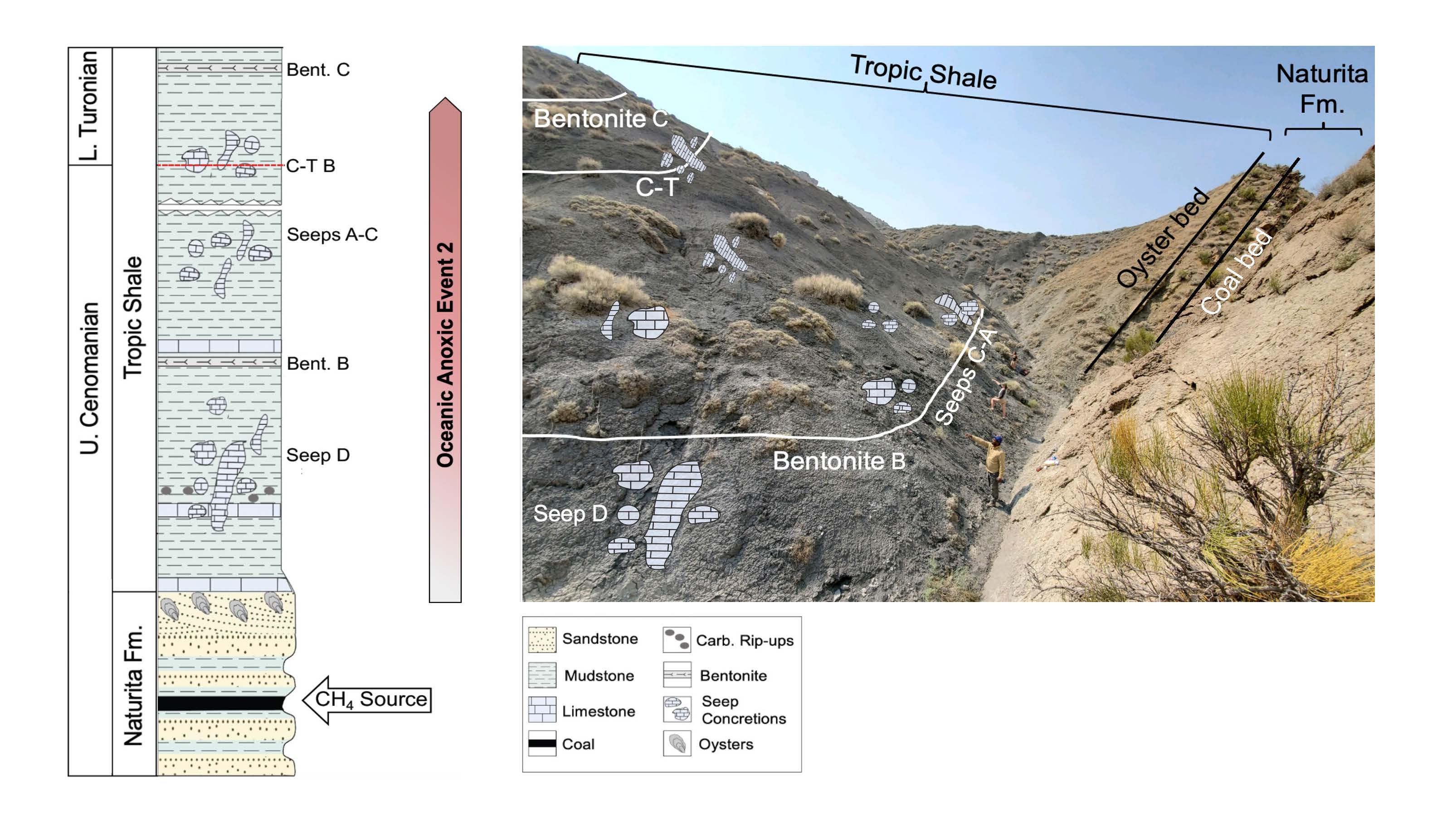 |
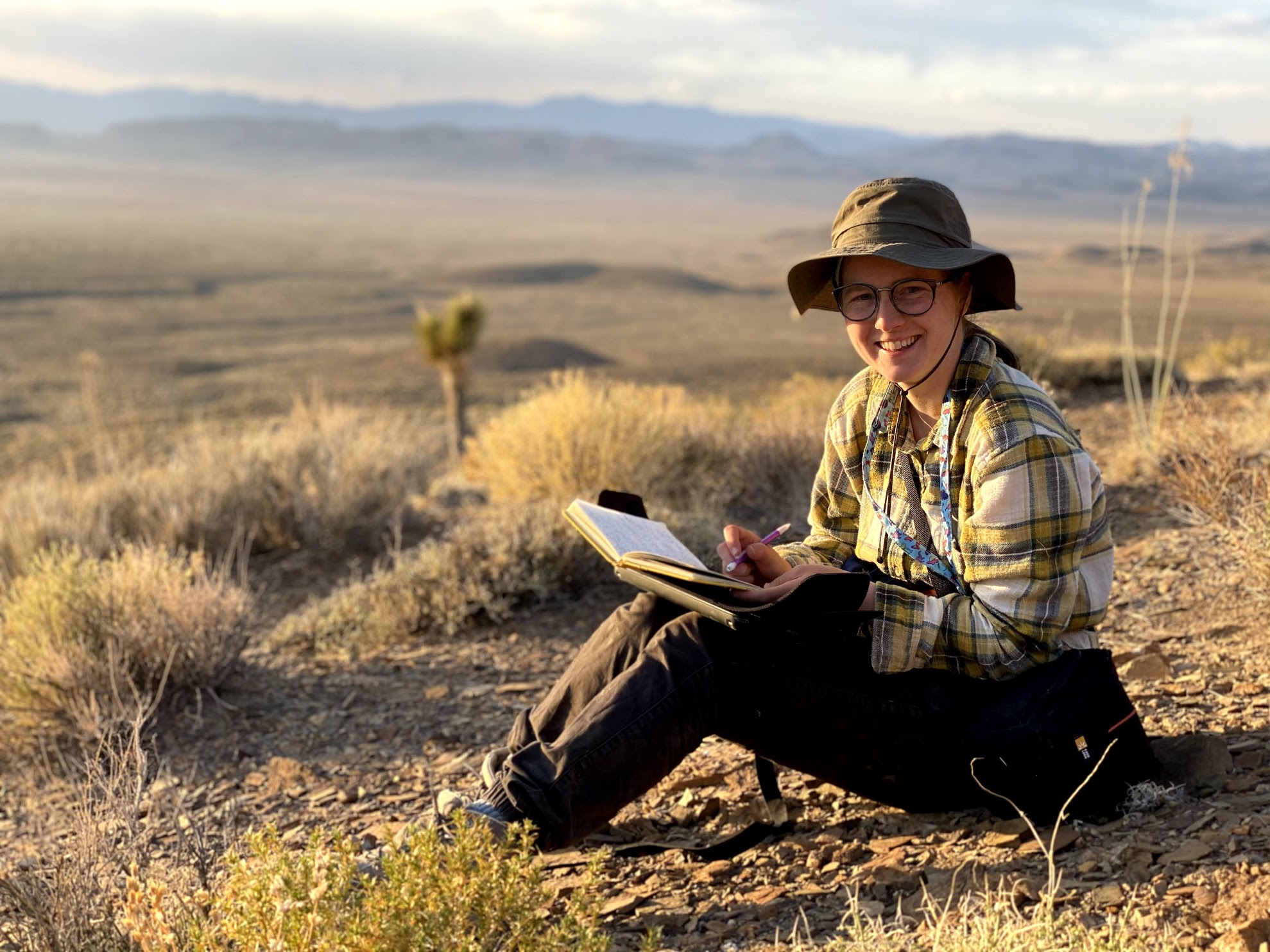 | Name: Mary Lonsdale
School: Johns Hopkins University
Research Statement: An Investigation of the Distribution and Composition of Early Cambrian Archaeocyathan Reefs in Esmeralda County, Nevada. 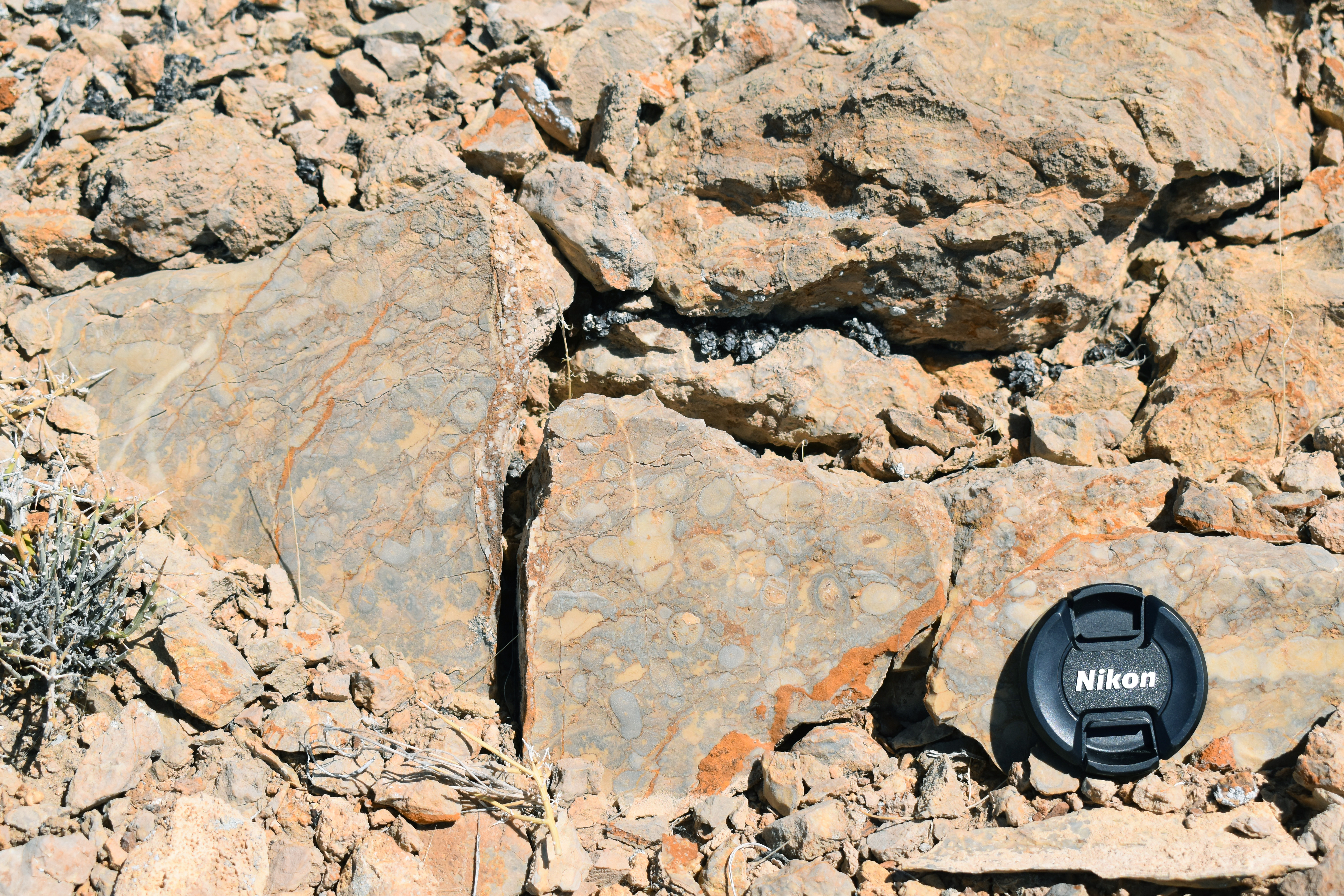 |
 | Name: Haley Thoresen
School: University of Idaho
Research Statement: Eocene Basin Record of Metamorphic Core Complex Exhumation in the Western United States Cordillera |
|
|
Want to get to know more about our research grant awardees? Learn more here.














